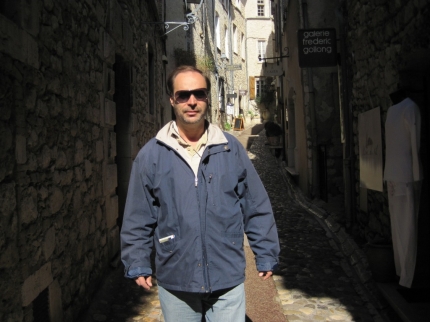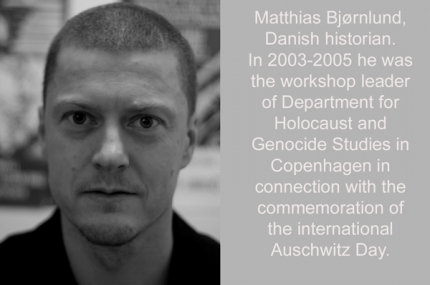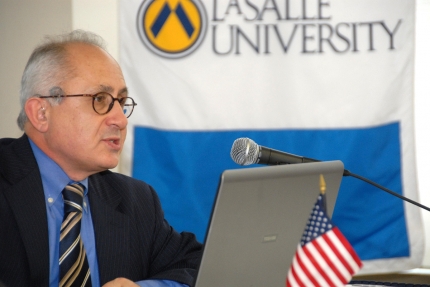Hannibal has also published widely on genocide and human rights, and is the author of the first comprehensive history of physical and cultural genocide in the Middle East and North Africa, entitled ‘Genocide in the Middle East: The Ottoman Empire, Iraq, and Sudan. He is also a member of The Modern Assyrian Research Archive which is a digital archive at the University of Cambridge relating to the language, culture and history of the Assyrian communities. The purpose of founding this archive is to ensure the preservation of the Assyrian language and culture and to promote and facilitate academic research on these. Another project that is being undertaken in Cambridge in association with the MARA project is the collection of hard-copy printed books relating to Assyrian culture. These will be deposited in Cambridge University Library and on the MARA Website.
It is my understanding that you work for Modern Assyrian Research Archive (MARA) would you please explain if MARA does any research on the Assyrian genocide that occurred by Ottoman Empire in 1915?
Yes, Nineb Lamassu is doing research using new MARA archival documents on the efforts of the Assyrians in exile in the USA in the 1960s to seek reparations for lost villages and churches. My hope is he will publish it soon as it fills in a lot of holes about Assyrian politics post-1945.
How come there are not enough scholars talking about the Assyrian genocide?
Israel Charny of the Hebrew University identifies five general factors (1) innocent misunderstandings and ignorance (2) statistical questions or quibbles, (3) definitionalism suggesting that genocide must be total and partial killings are just tragedies or atrocities, (4) realpolitik in terms of pragmatic concerns in reaching consensus among groups and (5) presentism in the form of prioritizing current concerns over historical truth or the search for justice. Misunderstandings are at work because some scholars have denied the existence of Assyrians for the past 80 years or so, with the rise of Arab and Kurdish nationalism, and tried to suppress the evidence that Assyrians ever lived or that there was ever a place called Assyria. Other misunderstandings occur because some Assyrians were counted as Armenians in the Ottoman millet system, or known to Europeans by denominational or sectarian labels such as Chaldean or Syrian. Still further misunderstandings take place because linguistic and anachronistic characterizations of Assyrians as merely Syriacs or Arameans create a lot of confusion. Imagine if someone tried to designate Turkish or Kurdish people as merely Turkic or Kurdic, or by ancient linguistic labels such as Altaic or Aryan—they would reject this as a destruction of their national and ethnic identity, and because it would create confusion as to whether they were Turkic or Kurdic-speaking Arabs or Persians, racially or nationally speaking. Finally, most misunderstandings by genocide scholars occur because of selective quotation by “Armenian genocide” scholars of original source material such as British and German archival documents. These selective quotations leave out massacres of Assyrians, Yezidis, Jews, and Greeks.
What could you tell us about Refail Lemkin and the impact the Simele Massacre had on him, was it a massacre in Simele or Genocide?
Yes, Professor Lemkin planned a chapter on “Genocide in Simmel, 1933” for his draft history of genocide in world history. His manuscript stated that 2,000 were killed. He also used Simele as an example of the type of thing that would be prohibited by the Genocide Convention, in a memorandum used to promote the ratification of the Genocide Convention by the USA.
Could we describe the killing of the Assyrian by Bedirhan Beg 1843-1846 as genocide?
Yes, Raphael Lemkin’s unpublished dossier on the Armenian genocide contains such a discussion in which he noted that “10,000 Nestorian and Armenian Christians were massacred and as many women and children captured and sold into slavery.” He quotes a British diplomat and explorer as stating that in the valley of Liza “Out of about one thousand only one escaped from the massacre.” The working papers of the Genocide Convention (the travaux preparatoires) establish that the design of the drafters of the convention was that genocide by an individual be criminalized, whether that individual was a private individual or government official. The travaux preparatoires indicate that ethnical groups and mental harm were included in the definition of genocide precisely to avoid the Soviet Union’s proposed requirements that genocide be a racist or fascistic policy of physical and biological destruction such as the Nazis pursued. The Soviet Union suggested that the genocide treaty define the “intent to destroy” a group as acts “aimed at the physical destruction” of the group. Sweden successfully argued that the crime of genocide extends beyond “racial” to “ethnical” groups, which revealed a clear intent to capture non-biological cultural or linguistic destruction. It was well known at that time that “race” was distinguished from “ethnicity” by the biological emphasis of the former, and the cultural, linguistic, and religious emphasis of the latter. Therefore a plan of racial extermination is not part of the legal definition of genocide. The examples of the German Poles, Polish Germans, Indian Muslims, and Hindu Pakistanis are relevant to whether a genocidal policy is required, for these were examples considered in the drafting history of the Genocide Convention as genocides that the convention would prevent and punish, even though there was no exclusive or unitary plan or policy to kill everyone rather than to kill some and deport many others. For example, some Bosnian Serbs, or some Germans, could have genocidal intent, but others not. Genocide was committed at Srebrenica, in Bosnia, even though fewer victims were documented than during the anti-Assyrian massacres of the 1840s in Hakkari, even though Bosnian Muslim forces were at war with the Bosnian Serbs and used the Srebrenica enclave in June 1995 to attack a nearby Serbian village, and even though nearly all women and children of Srebrenica were spared, unlike in Hakkari where they were massacred or raped, typically. Similarly, in the case of Darfur, Sudan, the Appeals Chamber of the International Criminal Court had the opportunity in 2010 to make the determination that the evidence provided by the prosecutor indicating more than two million survivors in Darfur failed to provide reasonable grounds to believe that genocide was committed. It could have disposed of the genocide charges then and there and accelerated the rest of the case’s disposal. It declined to do so, which means that reasonable grounds to believe that genocide was committed must be an available finding from proof of many atrocities and deprivation of adequate conditions of life, which were recited in the Appeal Chamber’s judgment. Turkey has also recognized genocides that affected much smaller percentages of the relevant population than the 1840s Hakkari massacres, such as in Cyprus in the 1960s and early 1970s, Bosnia in the early 1990s, Kosovo in the late 1990s, and East Turkestan China in the late 2000s. Turkey’s diplomatic communications and practices are relevant to the application of the genocide treaty. Article 31 of the Vienna Convention on the Law of Treaties provides that treaty interpretation shall take into account “subsequent practice in the application of the treaty.”
What can Assyrians around the world do to help scholars with their research?
They can contribute copies or originals (if they no longer require the originals) of family archives and personal collections to the Modern Assyrian Research Archive to be shared among scholars. They can also financially support MARA and similar projects such as the Assyrian Youth Federation and the Assyrian Foundation.
Do you believe that Turkey will ever accept their wrongdoing?
Yes, some Turkish leaders have already conceded that massacres and ethnic cleansing took place. Insofar as Turkey consistently recognizes massacres and ethnic cleansings to be genocide in its diplomatic and international legal communications, it is a small step to say genocide. The country is also moving in the direction of legal reforms to bring it in line with its treaty obligations under the International Covenant on Civil and Political Rights, the Convention on Biological Diversity, the European Convention for the Protection of Human Rights and Fundamental Freedoms, and others. Such reforms include more freedom of religion, more indigenous peoples’ rights, more freedom of speech, and the like.
Do you consider yourself an Assyrian genocide scholar?
Yes, although that does not represent all of my scholarship, it does accurately characterize some of it. I also write about genocide in Darfur, Kurdistan, Southern Sudan, and other places, as well as about topics other than genocide such as free speech, intellectual property, and telecommunications.
How familiar are you with Seyfo Center?
I am more familiar since hearing Sabri’s presentation about how the Center is working to get the Armenian and the Greek organizations to cooperate with Assyrians. I have also become aware due to my participation in the Innanna Foundation’s 2011 workshop on the Assyrian genocide, that in 2002 the Assyrian Seyfo (Genocide) international Committee (ASIC) organized an event in which it invited representatives of the various parties of the European Parliament to listen to presentations by researchers on the Assyrian genocide, including Gabriele Yonan and Sabri Atman.
By Linda Abraham



